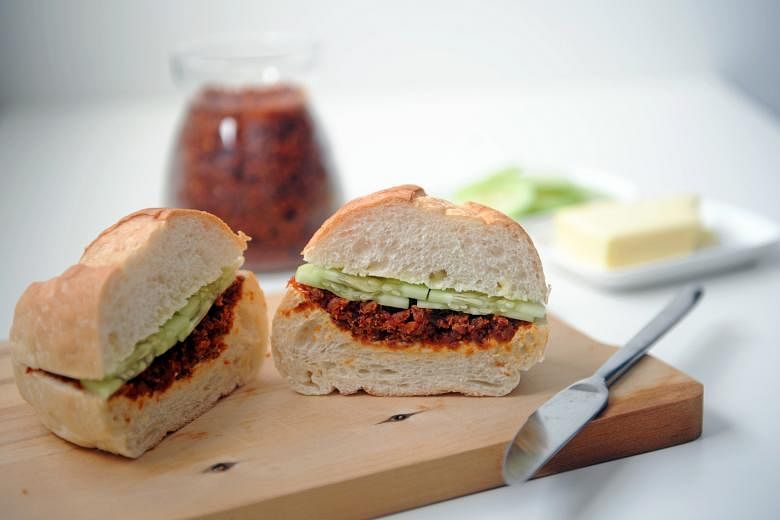While in Tokyo on holiday a few weeks ago, I awoke one morning to find that it had snowed overnight. Out of my hotel room window, I saw rooftops covered in snow.
Now, some people would find this thrilling and I might have felt the same way too, if I had been in the mountains getting ready for a day of skiing. In the city, it is just a bother. Piles of dirty snow collect on the sides of the road. To make things worse, it was raining.
If I had any common sense, I would have sought amusement indoors, drinking endless cups of coffee, eating and window shopping. But I was hankering after a bowl of ramen and wanted to check out the uni ramen at a shop in Awajicho.
When in Tokyo, I usually take the long way to the train station because the streets are packed with interesting things to look at and, in winter, I can walk and walk without getting hot and bothered.
That morning, I checked the subway map and found that the station next to the hotel would take me right to Awajicho.
-
MAKE IT YOURSELF:HAE BEE HIAM

-
INGREDIENTS
• 250g dried shrimps
• 30g dried chillies
• 500g shallots
• 6 stalks lemongrass, white parts only
• 3 candlenuts
• 20g belacan
• 125ml cooking oil
• 12 to 14 kaffir lime leaves (optional)
• 2 Tbs sugar
-
METHOD
1. Rinse the dried shrimps under running water, rubbing them with your hands. Let drain in a colander.
2. Using a pair of kitchen shears,cut the chillies in half lengthwise and remove the seeds. Place in a bowl and cover with boiling water. Let sit for 15 minutes, then drain.
3. Peel the shallots and cut into rough chunks. Slice off the root end of the lemongrass, peel off and discard the first layer. Slice thinly crosswise into rounds.
4. Place the dried chillies, shallots,lemongrass, candlenuts and belacan in a food processor. Process until you get a fine paste, stopping the machine four to five times to scrape down the sides. Spoon the spice paste or rempah into a large bowl.
5. Pulse the dried shrimps in the food processor as finely or coarsely as you like. Do this in at least two batches, or more if you are using a small processor.
6. Heat the oil in a large wok over medium heat. When wisps of smoke rise from the oil, add the rempah, give it a quick stir and turn heat down to medium low. Cook for 30 minutes, stirring constantly, or until the oil separates from the spice mixture. It is important to keep the mixture moving so that it cooks evenly and thoroughly.
7. After 30 minutes, tear the kaffir lime leaves (if using) from the edge to the stem (above). Add them to the spice mixture along with the dried shrimps. Mix all the ingredients well into the spice paste and continue to fry over medium-low heat for another 30 minutes, keeping the mixture moving.
8. Remove and discard the kaffir lime leaves (if you have used them). Add the sugar, mix well and fry for another 10 minutes. Scoop out into a large bowl, let cool completely and spoon into jars. Refrigerate and use up within two weeks.
• Makes 550g of hae bee hiam
Once I got there, it was all about trying not to slip and break my neck on the snow and ice. I was early for the 11am opening time so, despite the sludge and rain, I decided to explore the neighbourhood.
That was when a smell stopped me in my tracks. It was the familiar and comforting scent of an aromatic curry coming at me in waves from an Indian restaurant, and I was overcome by a fierce longing that took me by surprise.
I always crave spicy food after a trip to Japan. At that moment, I wanted to ditch the ramen, walk into the Indian restaurant and order everything on the menu.
But I had my uni ramen. The scent of the spices, however, stayed with me for the rest of the trip.
While unpacking after the trip, I made myself a sandwich with hae bee hiam, a dried shrimp condiment, that a friend had given me. The chilli kick was just what I needed after the trip and I made myself another one.
Then I began wondering what else I wanted in the hae bee hiam and if I could improve on the recipe.
The rempah or spice paste has dried chillies, belacan, candlenuts and shallots. It is great, but I wanted something with a bit of zing too.
Fresh chillies? Lemongrass? Kaffir lime leaves? All three sounded good, but I preferred the heat from dried chillies, so I decided against adding a couple of fresh ones.
But the lemongrass proved to be a game-changer. The resulting hae bee hiam was punchy with chilli, but the citrusy notes from lemongrass added depth and freshness to it.
The kaffir lime leaves, which I tear up and fry with the dried shrimps, impart a more subtle flavour that kicks in right at the end. In a sandwich or fried rice, it might be lost. So it is optional in the recipe.
None of the ingredients is hard to find in a supermarket or to prepare.
However, making hae bee hiam takes a lot of patience, as I found out while fiddling with the recipe.
Peeling the shallots takes an inordinate amount of time, so I do it while watching telly the night before I plan to make a batch. Supermarkets also stock ready-peeled shallots.
The chillies can also be seeded a couple of days ahead. But set aside a couple of hours on cooking day.
The rempah needs to be cooked slowly over low heat so that the ingredients do not scorch but become aromatic. The smell of chillies and lemongrass fills the kitchen and I love the funk of the belacan.
It takes at least 30 minutes of constant stirring before the oil separates from the spice paste and I do a little jig every time this happens. That's because it is time to add the dried shrimp. And there is, oh, only another 40 minutes or so of frying.
The hard work pays off because the finished product tastes like a lot of love had gone into it and the long, slow frying ensures the condiment is just dry enough, not wet and pasty like some versions I have had.
I like it best in a sandwich made with the kind of soft, squishy white rolls that neighbourhood bakeries turn out. Split in half, lavishly buttered, packed with hae bee hiam and some crunchy slices of cucumber, it makes a good breakfast or snack.
The condiment can and should be added to fried rice to give it a bit of a kick. My friend fries it with skinny string beans and adds the juice of a couple of calamansi limes at the end. Her dish is wonderful with plain rice.
I always laugh at friends who pack sachets of chilli sauce or bury jars of sambal in their suitcases when they travel.
Now I am wondering if I should pack a jar of hae bee hiam on my next winter adventure in Tokyo.



